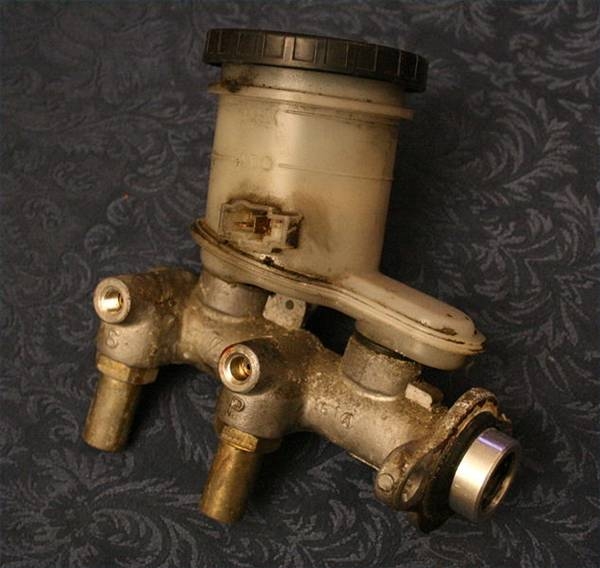
One of the most important parts of changing the brake master cylinder on your Ford Mustang is not successfully replacing the part but bleeding the brake system afterwards. This procedure will eliminate the air from lines and components so that you can effectively slow or stop the vehicle. Make sure you have the correct procedure for your particular model before changing the master cylinder, and then follow these steps to replace the unit.
Park your car in a safe place and open the hood. Locate the brake master cylinder, which is attached to the brake booster. The booster is a drum-like metal unit mounted on the driver's side of the firewall.
Unplug the fluid level sensor from the master cylinder reservoir and remove the clutch hose from the reservoir if your car is equipped with a manual transmission.
Disconnect the brake lines from the master cylinder using a tube wrench to avoid damage to the nuts and lines; then cover the line openings with clean plastic bags and rubber bands to avoid contamination of the brake system.
Remove the master cylinder mounting nuts from the brake booster using a wrench or ratchet and socket, and carefully lift the master cylinder off the engine compartment.
Remove the reservoir from the old master cylinder and install it on the new unit.
Set the new master cylinder in a vise and install two clear plastic hoses--about 9 inches in length--on the line connectors of the master cylinder and bend the lines over the reservoir; then fill the reservoir with new brake fluid.
Cover the tip of a Phillips screwdriver with a shop rag and pump the master cylinder piston in and out until all air bubbles are eliminated from the reservoir; then replace the lid on the reservoir.
Set the master cylinder in place and start the brake line and mounting nuts by hand to avoid damaging the threads and brake lines. Tighten the nuts, but do not over-tighten.
Connect the clutch hose and plug the fluid level electrical connector.
Bleed the brake system following the procedure recommended by your particular vehicle manufacturer.